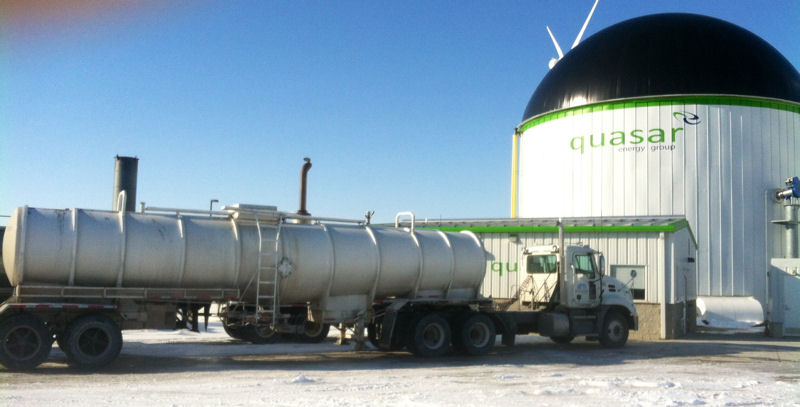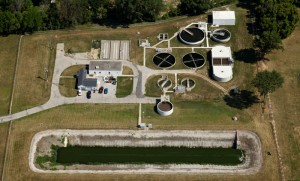
This Quasar Energy Group (Cleveland) facility uses anaerobic digestion to treat the Village of Swanton’s (Ohio) biosolids and produce methane. Photo courtesy of the Quasar Energy Group.
Last year, the Water Environment Federation (WEF; Alexandria, Va.) formally began using the term, water resource recovery facility (WRRF), in place of wastewater treatment plant and other conventional names. A task force appointed by the WEF Committee Leadership Council was tasked with developing a list of new terms, discussing them, and selecting one to use. Water resource recovery facility was adopted after the WEF Board of Trustees reviewed and approved the change in July 2012. It focuses on the products and benefits of treatment rather than the waste coming into facilities.
“WEF changing ‘wastewater treatment plant’ to ‘water resource recovery facility’ is the kind of thing that we need. Words are powerful; they motivate people. They mean something,” said Julian Sandino, a vice president at CH2M Hill (Englewood, Colo.), during a luncheon hosted by the U.S. chapter of the Inter-American Association of Sanitary & Environmental Engineering (Arlington, Va.).
The name change reflects a changing paradigm in the water sector, focusing on resource recovery. And this shift has occurred before, with the evolution of WEF’s name from the Federation of Sewage Works Associations to the Federation of Sewage and Industrial Wastes Associations to the Water Pollution Control Federation. WEF adopted the current name in 1991 to reflect an expanded focus of nonpoint and point sources of pollution.
“Even at WEF our name has changed with the times,” Sandino said. “This trend toward resource recovery, we’re already part of it,” he added.
The Michigan Water Environment Association (MWEA) adopted WRRF. Dave Vago, past president of MWEA, introduced the term and revealed the MWEA board’s endorsement of it to members in the December 2013 issue of the Matters magazine, said Jerry Harte, MWEA executive director.
“We are fully behind and committed to supporting the concept,” Harte said.
The article initiated MWEA’s use of the term, which even appears in the title of the informational pamphlet, “Water Resource Recovery Management Handbook for Community Officials.” The pamphlet gives local decision-makers an overview of the treatment process and describes wastewater treatment as water resource recovery. In addition, a MWEA program for continued training of professionals has been named Water Resource Recovery Technician Credential, Harte said. The title of the program is announced and explained many times each year, he added. Harte also speaks at many events every year, explaining and endorsing the “WRRF concept at each event,” he said.

The Village of Swanton (Ohio), a WEF member, is considering adopting the term water resource recovery facility to reflect the products and benefits generated by wastewater treatment. Photo courtesy of the Village of Swanton’s (Ohio) wastewater treatment plant.
The Village of Swanton (Ohio), a WEF member, is considering adopting the term for its wastewater treatment plant. Currently, the village council is discussing the change. Both the council and village mayor would have to approve the change, said Steve Geise, superintendent of the village’s wastewater treatment plant.
“WEF is recommending it to focus more on the products and benefits of treatment than the waste coming into the facilities,” Geise said. “I feel that a name change would recognize Swanton as a leader in preserving the environment,” he explained.
In addition, the village works to exemplify a WRRF. In 2013, it began transporting all the biosolids produced to a Quasar Energy Group (Cleveland) facility that uses anaerobic digestion to treat biosolids and produce methane. The energy produced from the village’s biosolids equals about 9030 kWh/month, enough to power about 10 U.S. homes throughout the year, Geise said.
— Jennifer Fulcher, WEF Highlights








May 22, 2014
Featured